“Kick starting Circular economy”: Under this title the Luxembourg government launched at the beginning of February a one-month road show in order to present its ambitious plan to state an example as the perfect testing ground of the circular economy. Through a series of presentations, public and private sector stakeholders joined forces in order to promote the benefits and business opportunities that may arise from the circular economy, hence stressing the fact that the concept of the circular economy is emerging as an economic strategy rather than a purely environmental one. This has been especially highlighted by a government representative who stated, at the first official presentation of the study “Luxembourg as a knowledge capital and testing ground for the circular economy”[1] (hereinafter referred to as the EPEA study), that “the circular economy is about going green, particularly about this kind of green” while showing bundles of 100€ on a presentation slide. In the past, economic actors proved to have only shown a limited interest in interfering with green politics, and if they did, it was often imposed by the regulatory framework or it was part of their branding strategy or their core business. By setting the focus on the circular economy, it is probably for the first time that authorities presented a nationwide strategy that aims at reconciling the wider business community with the green agenda of the government.
So what’s the buzz about the circular economy? First at all, it aims to build an economic model that is less dependent on primary energy and raw materials input. It aspires to work towards resource efficiency by reducing waste and the use of energy during the production process mainly by relying on a set of tools such as waste prevention, reuse and recycling. The core of the circular economy is to make waste non existent and to develop a whole (new) economy around it. Consumable and durable goods are designed in such a way that they can be easily recollected, disassembled and reused either for the same purpose or by giving them a new reason. The challenge per se is to keep the circle as tight as possible and to avoid any waste leakages and to maintain the longevity of the input materials. Let’s say, it is a more complex version of the economy depicted in the climate-fiction movie Waterworld where the leading actor tries to earn a living by trading waste on floating islands built from scrap metal. Although one might refute the scientific foundations of the underlying global warming assumption in the movie, the economics here is on the mark. Every economic actor takes appropriate action as soon as they have to deal with resource scarcity.
Closing the loop: From Linear to circular and how it benefits the economy
The mounting pressure on resources is an essential motive for economies highly dependent on primary resources to take appropriate action without delay. Europe is a net importer of energy and raw materials, making the old continent vulnerable to geopolitical risks and undermining its negotiation power towards commodity-driven and exporting economies. The risk of supply disruption and the strong price volatility of primary resources are constantly pushing companies to rethink their production model and to turn towards alternative ways of manufacturing goods. The resource dilemma is of course nothing new; hence it is not of a big surprise to find out that several companies in Luxembourg are already partially applying principles of the circular economy[2], just most of them were simply not aware of this fact. This evolution illustrates that the linear “take-make-dispose” pattern has already been identified by certain actors as a rather unsustainable business model which favours a rather wasteful attitude towards resource management and hence adding additional pressure on its prices. With the current project, the government aims to take the circular economy to the next level. According to the EPEA study, major opportunities for Luxembourg lie ahead. Beside the substantial net material savings, the concept of circular economy may become an important element of Luxembourg’s diversification policy towards an innovation driven economy. The move from “one way products” to “circular products” requires major capabilities in research and development activities creating hence a breeding ground for advanced innovation in product and material design and improved value flows (e.g construction sector and traditional industries).
However, Luxembourg’s economy is largely driven by its service sector. So one may wonder what would be the benefits for tertiary activities. One may mention the linkage effects for the logistics sector that may benefit from so called “reverse logistics” which covers the transfer operations related to the reuse of products and materials for remanufacturing and refurbishments purposes. But probably the most promising change is expected from the transition from a “buy-own-throw away” to a “rent-use-give it back” approach. Instead of buying, durable goods are leased, rented or shared with the intention to shift the responsibility of ownership to the producer or a third party. As a result, they will be in charge of the maintenance of the rented goods and give them a new reason as soon they get phased out. The finance industry, which has been consulted in the context of the national circularity study, will also play an important part in financing the circular economy or related leasing activities.
Challenges ahead
1) Measuring the impact of the circular economy.
The concept of circular economy will be a key element in the quest for decoupling economic growth from resource consumption. Figure 1 depicts the difference between relative decoupling and absolute decoupling. The former suggests that resource use grows at a slower rate than economic output while the latter depicts an absolute decline in resource consumption while economic output grows. However, assessing the decoupling process is quite an issue as stated in the EPEA study. The lack of performance indicators on a national level makes it difficult to measure progress correctly.
Figure 1: Decoupling economic growth from resource use
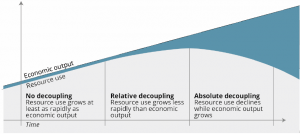
Source: European Environment Agency.
Graph 1: Resource efficiency in Luxembourg (Base 100=2000)
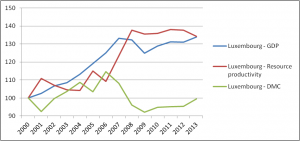
Source: Eurostat.
The measurement issues are also discussed on a European level. Currently, the European commission (EC) uses “Resource productivity” as a lead indicator in their annual publication “Resource Efficiency Scoreboard”. Resource productivity is a measure of how efficiently the economy uses material resources to produce output. According to the scoreboard, it gives an indication of the decoupling of the economy from material consumption and is currently calculated by dividing GDP by Domestic Material Consumption (DMC)[3]. By applying this indicator to Luxembourg, Graph 1 shows signs of absolute decoupling for Luxembourg with GDP rather increasing and DMC rather decreasing since 2000. But this is not the whole story. First of all, Luxembourg’s steep rise in resource productivity since 2000 is mainly attributable to the GDP increase which is heavily reliant on banking and services, a sector that consumes a rather insignificant amount of raw materials.
Secondly, the sharp decline in 2008 for the DMC indicator is undoubtedly the result of the financial crisis and the subsequent economic recessions. Lastly, a paper by Wiedmann et al. (2013)[4] argued that the lead indicator GDP/DMC may mislead assessments of resource productivity in another way. The DMC indicator is defined as the total amount of material directly used in an economy. DMC equals Direct Material Input (DMI) minus exports with DMI measuring the direct input of materials available for the use in the economy[5]. However, this approach might give a distorted view of the real consumption of raw materials as only net imports of resources are accounted for and not the raw materials used in imported goods. Hence, apparent efficiency improvements might be explained by the relocation of material extraction and manufacturing to overseas locations which is quite common nowadays in the context of globalisation and global division of labour. Hence, given the flaws of the EC’s lead indicator and the considerable openness of the Luxembourg economy, it is difficult to assess whether Luxembourg is on the right way to “decouple” its growth from extensive resource use and stresses as well the fact of how difficult it can be to find an appropriate indicator for resource efficiency. In a recent statement, the EC recognises this issue and aims to replace the DMC indicator by an indicator named raw material consumption (RMC). It is supposed to provide a more accurate picture of consumption and will be used in the future as soon more data will be available.
2) Global supply chain
Another major challenge for the implementation of circular economy is the geographic dispersion of manufacturing activities. Luxembourg, as a small and open economy, is highly dependant on the cross-border flow of raw materials, intermediate goods and final products, which makes it a lot harder to close loops or to manage inefficiencies in resource management. According to a study of the World Economic Forum (WEF)[6], the geographic dispersion of the supply chains has been identified as a major concern by key stakeholders. Using a large number of components originating from different geographical locations increases the likelihood to encounter efficiency losses. Moreover, the entire supply chain is often not owned by a single company, but may involve several suppliers. Hence, intensive collaboration is needed in order to close potential loopholes and a common view in product and service design in order to make circularity work.
3) Spin the green wheel of fortune!
When addressing change; financing is a central question that comes immediately to mind. According to the WEF, the benefits linked to the circular economy are estimated to be around 1 trillion € at the global stage. Compelling technologies and disruptive business models may offer tangible opportunities for investors to further diversify their portfolio and to create commercial value which otherwise would have remained hidden. However, the current investment environment in Europe remains bleak. In the aftermath of the global financial crisis investment expenditure collapsed. By 2014, real gross fixed capital formation was about 15%[7] below its pre-crisis peak. Moreover, investment in research and development remains weak at the EU level (2% of GDP), especially if you compare this number with other advanced economies such as the United States (3% of GDP). Fortunately, the macroeconomic environment may benefit from numerous tailwinds such as the depreciation of the Euro, the quantitative easing programme by the European central Bank and the introduction of the EFSI[8]. Especially the latter may enhance the risk taking capacities of investors, provided that the funds are really channelled to innovative projects. These potentially positive developments could contribute to improve the lacklustre investment environment in Europe and to restore confidence among investors. And this might be good news for the circular economy.
However, another major cornerstone will be key in order to attract funds into circular activities; namely the predictability and quality of the regulatory framework. The EC introduced last year the 6-waste regulation[9], but withdrew it in order to replace it by “a new, more ambitious proposal by the end of 2015 to promote the circular economy”. It is important that the upcoming guidelines in resource and waste management remain technically and economically feasible within a reasonable timeframe. It will be fundamental to avoid additional red tape and to minimise regulatory and administrative costs that may lead to a potential crowding out of investments. In the end, nobody wishes that the circular economy may never get “kick-started” in the first place.
[1] Drafted by the EPEA Internationale Umweltforschung GmbH for the Ministry of Economy.
[2] P. 28 : Luxembourg s a knowledge capital and testing ground for the circular economy. EPEA
[3] DMC includes metal ores, industrial minerals, construction material, biomass and fossil fuels.
[4] Wiedmann et al. (2013): The Material Footprint of Nations.
[5] Definition: Eurostat.
[6] Towards the Circular Economy: Accelerating the scale-up across global supply chains.
[7] European Commission.
[8] European Fund for Strategic Investments.
[9] Directives 2008/98/EC on waste, 94/62/EC on packaging and packaging waste, 1999/31/EC on the landfill of waste, 2000/53/EC on end-of-life vehicles, 2006/66/EC on batteries and accumulators and waste batteries and accumulators, 2012/19 on waste electrical and electronic equipment.
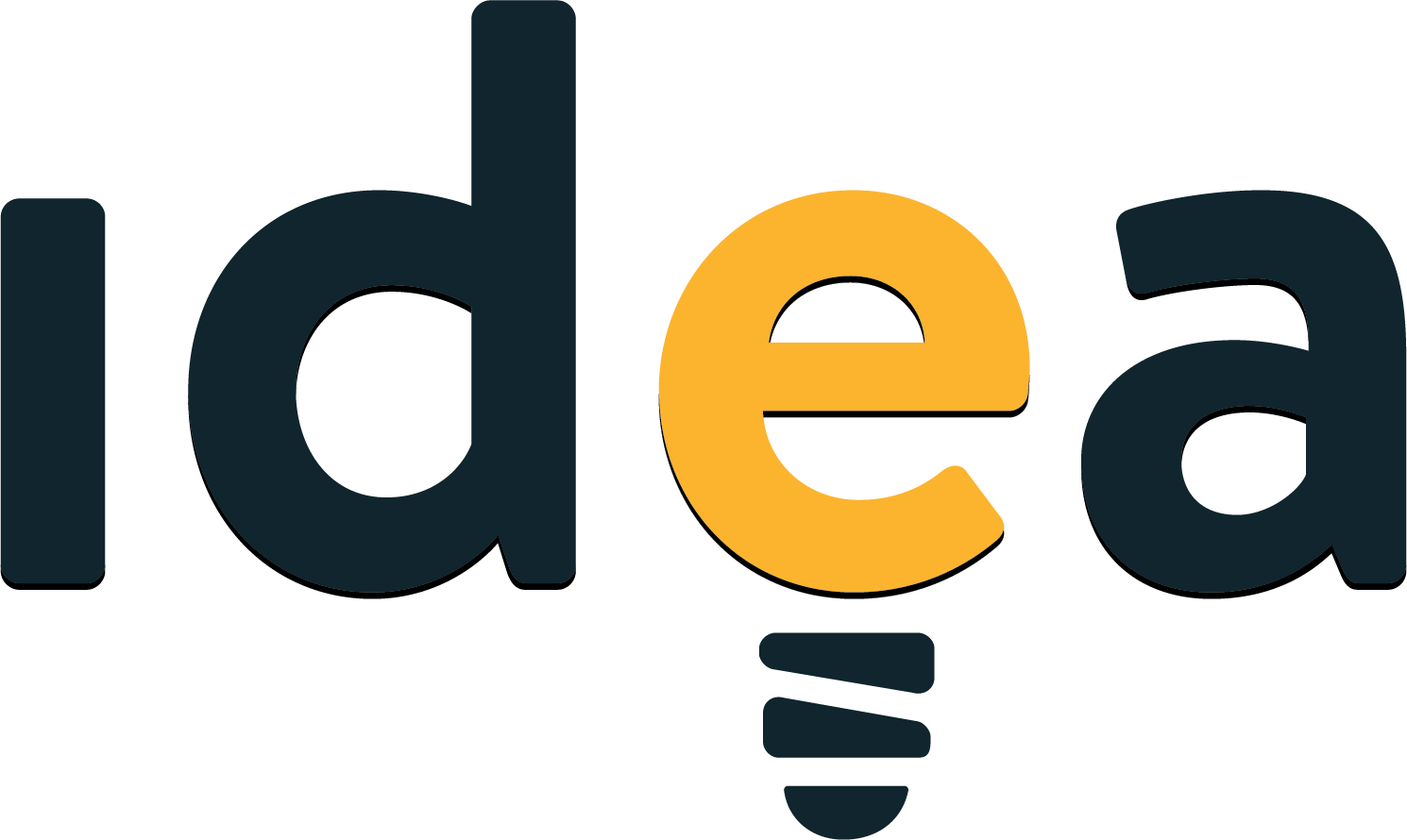
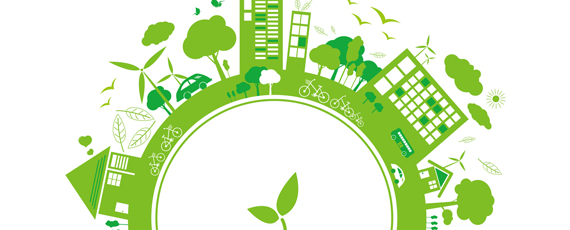
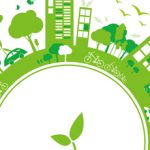

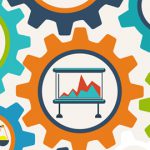

2 thoughts on “Bending the economy from Linear to Circular”